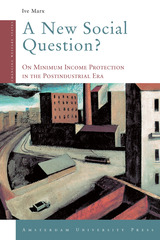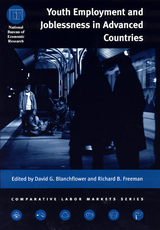5 books about OECD countries

Democracy, Inequality, and Representation in Comparative Perspective
Pablo Beramendi
Russell Sage Foundation, 2008
The gap between the richest and poorest Americans has grown steadily over the last thirty years, and economic inequality is on the rise in many other industrialized democracies as well. But the magnitude and pace of the increase differs dramatically across nations. A country's political system and its institutions play a critical role in determining levels of inequality in a society. Democracy, Inequality, and Representation argues that the reverse is also true—inequality itself shapes political systems and institutions in powerful and often overlooked ways. In Democracy, Inequality, and Representation, distinguished political scientists and economists use a set of international databases to examine the political causes and consequences of income inequality. The volume opens with an examination of how differing systems of political representation contribute to cross-national variations in levels of inequality. Torben Iverson and David Soskice calculate that taxes and income transfers help reduce the poverty rate in Sweden by over 80 percent, while the comparable figure for the United States is only 13 percent. Noting that traditional economic models fail to account for this striking discrepancy, the authors show how variations in electoral systems lead to very different outcomes. But political causes of disparity are only one part of the equation. The contributors also examine how inequality shapes the democratic process. Pablo Beramendi and Christopher Anderson show how disparity mutes political voices: at the individual level, citizens with the lowest incomes are the least likely to vote, while high levels of inequality in a society result in diminished electoral participation overall. Thomas Cusack, Iverson, and Philipp Rehm demonstrate that uncertainty in the economy changes voters' attitudes; the mere risk of losing one's job generates increased popular demand for income support policies almost as much as actual unemployment does. Ronald Rogowski and Duncan McRae illustrate how changes in levels of inequality can drive reforms in political institutions themselves. Increased demand for female labor participation during World War II led to greater equality between men and women, which in turn encouraged many European countries to extend voting rights to women for the first time. The contributors to this important new volume skillfully disentangle a series of complex relationships between economics and politics to show how inequality both shapes and is shaped by policy. Democracy, Inequality, and Representation provides deeply nuanced insight into why some democracies are able to curtail inequality—while others continue to witness a division that grows ever deeper.
[more]

Good Jobs, Bad Jobs
The Rise of Polarized and Precarious Employment Systems in the United States, 1970s-2000s
Arne L. Kalleberg
Russell Sage Foundation, 2011
The economic boom of the 1990s veiled a grim reality: in addition to the growing gap between rich and poor, the gap between good and bad quality jobs was also expanding. The postwar prosperity of the mid-twentieth century had enabled millions of American workers to join the middle class, but as author Arne L. Kalleberg shows, by the 1970s this upward movement had slowed, in part due to the steady disappearance of secure, well-paying industrial jobs. Ever since, precarious employment has been on the rise—paying low wages, offering few benefits, and with virtually no long-term security. Today, the polarization between workers with higher skill levels and those with low skills and low wages is more entrenched than ever. Good Jobs, Bad Jobs traces this trend to large-scale transformations in the American labor market and the changing demographics of low-wage workers. Kalleberg draws on nearly four decades of survey data, as well as his own research, to evaluate trends in U.S. job quality and suggest ways to improve American labor market practices and social policies. Good Jobs, Bad Jobs provides an insightful analysis of how and why precarious employment is gaining ground in the labor market and the role these developments have played in the decline of the middle class. Kalleberg shows that by the 1970s, government deregulation, global competition, and the rise of the service sector gained traction, while institutional protections for workers—such as unions and minimum-wage legislation—weakened. Together, these forces marked the end of postwar security for American workers. The composition of the labor force also changed significantly; the number of dual-earner families increased, as did the share of the workforce comprised of women, non-white, and immigrant workers. Of these groups, blacks, Latinos, and immigrants remain concentrated in the most precarious and low-quality jobs, with educational attainment being the leading indicator of who will earn the highest wages and experience the most job security and highest levels of autonomy and control over their jobs and schedules. Kalleberg demonstrates, however, that building a better safety net—increasing government responsibility for worker health care and retirement, as well as strengthening unions—can go a long way toward redressing the effects of today’s volatile labor market. There is every reason to expect that the growth of precarious jobs—which already make up a significant share of the American job market—will continue. Good Jobs, Bad Jobs deftly shows that the decline in U.S. job quality is not the result of fluctuations in the business cycle, but rather the result of economic restructuring and the disappearance of institutional protections for workers. Only government, employers and labor working together on long-term strategies—including an expanded safety net, strengthened legal protections, and better training opportunities—can help reverse this trend. A Volume in the American Sociological Association’s Rose Series in Sociology.
[more]

Government Ideology, Economic Pressure, and Risk Privatization
How Economic Worldviews Shape Social Policy Choices in Times of Crisis
Alexander Horn
Amsterdam University Press, 2017
From the 1980s on, a privatization of labor market-related risks has occurred in the OECD. Governments have cut the generosity of social programs and tightened eligibility rules, particularly for the unemployed. Government Ideology, Economic Pressure, and Risk Privatization: How Economic Worldviews Shape Social Policy Choices in Times of Crisis analyses these curtailments for eighteen countries over the course of four decades and provides an encompassing comparative assessment of the interactive impact of government ideology and economic pressure. It demonstrates that the economic worldviews of governments are the most important factor in explaining why cuts are implemented or not. While ideas of non-intervention in the market underlie cuts in generosity, ideas of equality and fairness are at the heart of stricter eligibility criteria. This book also shows that the impact of the economic pressures often held responsible for the marginalization of politics and government ideology is in fact conditional on the specific ideological configuration.
[more]

A New Social Question?
On Minimum Income Protection in the Postindustrial Era
Ive Marx
Amsterdam University Press, 2007
Social scientists, politicians, and economists have recently been taken with the idea that the advanced welfare states of Europe face a “New Social Question.” The core idea is that the transition from an industrial to a postindustrial environment has brought with it a whole new set of social risks, constraints, and trade-offs, which necessitate radical recalibration of social security systems. A New Social Question? analyzes that question in depth, with particular attention to the problem of income protection and the difficulties facing Bismarckian welfare states. It will be necessary reading for anyone interested in understanding the future of European social policy.
[more]

Youth Employment and Joblessness in Advanced Countries
Edited by David G. Blanchflower and Richard B. Freeman
University of Chicago Press, 2000
The economic status of young people has declined significantly over the past two decades, despite a variety of programs designed to aid new workers in the transition from the classroom to the job market. This ongoing problem has proved difficult to explain. Drawing on comparative data from Canada, Germany, France, Sweden, and the United Kingdom, these papers go beyond examining only employment and wages and explore the effects of family background, education and training, social expectations, and crime on youth employment.
This volume brings together key studies, providing detailed analyses of the difficult economic situation plaguing young workers. Why have demographic changes and additional schooling failed to resolve youth unemployment? How effective have those economic policies been which aimed to improve the labor skills and marketability of young people? And how have youths themselves responded to the deteriorating job market confronting them? These questions form the empirical and organizational bases upon which these studies are founded.
This volume brings together key studies, providing detailed analyses of the difficult economic situation plaguing young workers. Why have demographic changes and additional schooling failed to resolve youth unemployment? How effective have those economic policies been which aimed to improve the labor skills and marketability of young people? And how have youths themselves responded to the deteriorating job market confronting them? These questions form the empirical and organizational bases upon which these studies are founded.
[more]
READERS
Browse our collection.
PUBLISHERS
See BiblioVault's publisher services.
STUDENT SERVICES
Files for college accessibility offices.
UChicago Accessibility Resources
home | accessibility | search | about | contact us
BiblioVault ® 2001 - 2024
The University of Chicago Press









